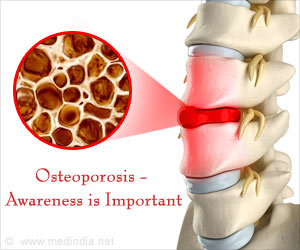A study has found that the degeneration of a small, wishbone-shaped structure deep inside the brain may provide the earliest clues to future cognitive decline.

"This could be a very early and useful marker for future incipient decline," said Evan Fletcher, the study's lead author and a project scientist with the UC Davis Alzheimer's Disease Center.
"Our results suggest that fornix variables are measurable brain factors that precede the earliest clinically relevant deterioration of cognitive function among cognitively normal elderly individuals," Fletcher said.
The research is published online today in JAMA Neurology.
Hippocampal atrophy occurs in the later stages of cognitive decline and is one of the most studied changes associated with the Alzheimer's disease process. However, changes to the fornix and other regions of the brain structurally connected to the hippocampus have not been as closely examined. The study found that degeneration of the fornix in relation to cognition was detectable even earlier than changes in the hippocampus.
"Although hippocampal measures have been studied much more deeply in relation to cognitive decline, our direct comparison between fornix and hippocampus measures suggests that fornix properties have a superior ability to identify incipient cognitive decline among healthy individuals," Fletcher said.
Either one of those things being lost will "degrade the signal transmission" in the brain, Fletcher said.
"We found that if you looked at various brain factors there was one — and only one — that seemed to be predictive of whether a person would have cognitive decline, and that was the degradation of the fornix," Fletcher said.
The study measured two relevant fornix characteristics predicting future cognitive impairment — low fornix white matter volume and reduced axonal integrity. Each of these was stronger than any other brain factor in models predicting cognitive loss, Fletcher said.
He said that routine MRI examination of the fornix could conceivably be used clinically in the future as a predictor of abnormal cognitive decline.
"Our findings suggest that if your fornix volume or integrity is within a certain range you're at an increased risk of cognitive impairment down the road. But developing the use of the fornix as a predictor in a clinical setting will take some time, in the same way that it took time for evaluation of cholesterol levels to be used to predict future heart disease," he said.
Fletcher also said that the finding may mark a paradigm shift toward evaluation of the brain's white matter, rather than its gray matter, as among the very earliest indicators of developing cognitive loss. There is currently a strong research focus on understanding brain processes that lead eventually to Alzheimer's disease. He said the current finding could fill in one piece of the picture and motivate new directions in research to understand why and how fornix and other white matter change is such an important harbinger of cognitive impairment.
"The key importance of this finding is that it suggests that white matter tract measures may prove to be promising candidate biomarkers for predicting incipient cognitive decline among cognitively normal individuals in a clinical setting, possibly more so than gray matter measures," he said.
Source-Eurekalert
 MEDINDIA
MEDINDIA




 Email
Email










